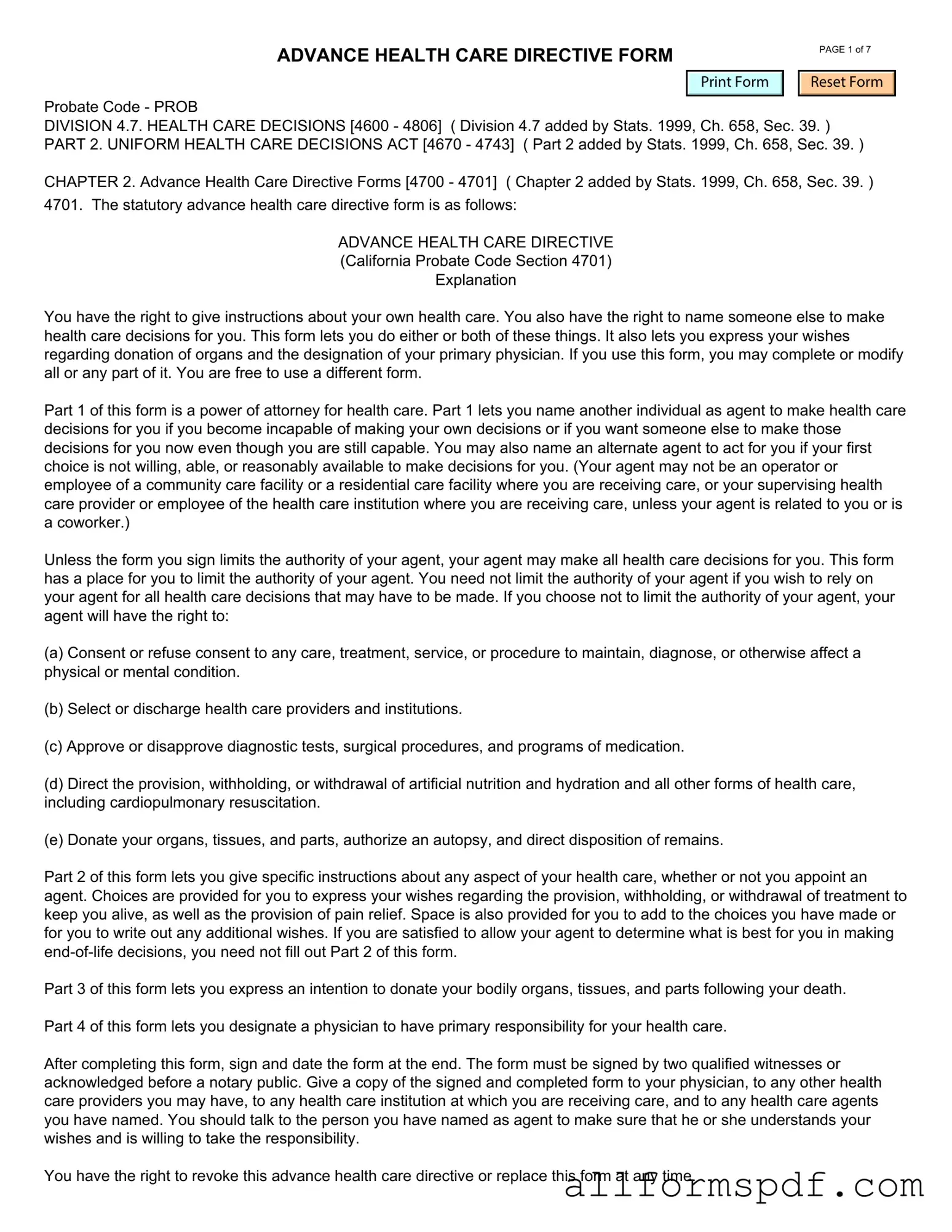Filling out the California Advanced Health Care Directive form can be a crucial step in ensuring that your medical wishes are respected. However, there are common mistakes that people often make when completing this important document. One frequent error is not providing clear instructions regarding medical treatment preferences. When individuals leave their wishes vague, it can lead to confusion for healthcare providers and family members.
Another mistake is failing to appoint a health care agent. While many people understand the importance of having someone to make decisions on their behalf, they might overlook this step. Without a designated agent, healthcare providers may struggle to determine who should make decisions if the person is unable to do so.
Some individuals neglect to discuss their wishes with their chosen health care agent. It is essential to have open conversations about preferences and values. When agents are unaware of the person's desires, they may make decisions that do not align with the individual's wishes.
Additionally, people often forget to sign and date the form. A signature is a vital part of validating the document. Without it, the directive may not hold up in a medical setting. Similarly, witnesses are necessary for the form to be legally binding. Many individuals forget to include the required witnesses or do not ensure that the witnesses meet the legal criteria.
Not updating the directive regularly is another common oversight. Life circumstances change, and so do preferences. Failing to revisit and revise the directive can lead to outdated instructions that may not reflect current wishes.
Some people may also overlook the importance of providing copies of the directive to relevant parties. It is not enough to complete the form; sharing it with family members, healthcare providers, and the appointed agent is crucial for ensuring that everyone is informed of the individual's wishes.
Moreover, using ambiguous language can create misunderstandings. Clear and concise wording is essential to convey specific medical preferences. When terms are open to interpretation, it can lead to confusion during critical moments.
Finally, individuals sometimes forget to check the laws and regulations surrounding advanced directives in California. Each state has its own requirements, and being unaware of these can result in a document that is not legally recognized.
